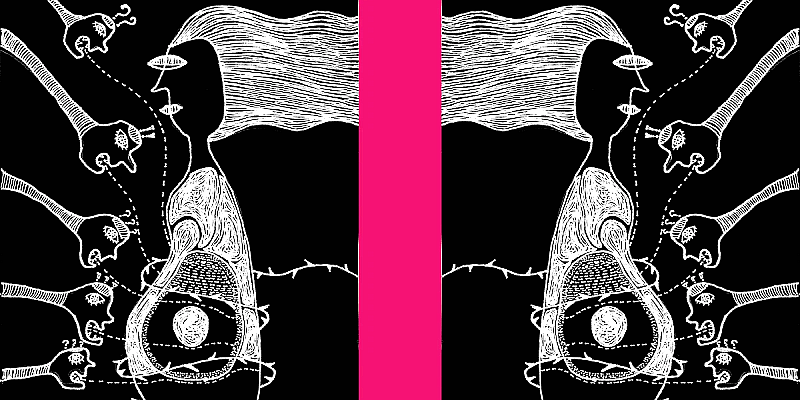The natural sex ratio (SR, ratio of boys and girls) is typically over 100 as the number of girls born is naturally lower than the number of boys.
This may be nature’s way of offsetting the higher risk that men have of dying – male babies are biologically weaker than females.
Any deviation from this natural distribution is a cause for concern as it suggests human interference.
Unfortunately, Bangladesh has experienced such a disruption, with an SR of 98.04 according to the 2022 census, representing a significant decline from the SR of 108 recorded in 1974.
The ratio decreased to 106 in 1981 and remained stable over the years, until it declined again to 100.3 in 2011 and further to 98.04 in 2022.
In some divisions, such as Chattogram and Mymensingh, the SR is even lower.
This SR is man-made through selective sex determination with the aim of getting rid of the girl child, early death due to neglect, and infanticide.
There is evidence to suggest that the reported decline in the SR between 1974 and 1981 was mainly due to inaccurate SR calculation in the 1974 census.
However, the consistent decline in SR since 2001 suggests that this is not simply an enumeration error.
Also, it is unlikely that such errors would occur now, as Bangladesh has experienced several rounds of successful censuses.
The use of ultrasonography to determine child sex early and stagnation in contraception use since the early 2000s may shed light on why this is happening in Bangladesh.
During the 1970s, new technologies were introduced globally that allowed for the identification of fetal sex in utero.
One such technology, ultrasound, became popular quickly in low- and middle-income countries in the 1980s.
It is a non-invasive procedure that can be performed by medical and non-medical personnel at a low cost, providing up to 98 percent reliable results after the seventh week of pregnancy.
In Bangladesh, it became popular in the early 2000s, around the same time when the SR began to decline.
The association between the use of ultrasonography and aborted female fetuses was further established through research in Bangladesh.
Consequently, the health ministry banned the use of ultrasonography to determine an unborn child’s sex.
In February 2020, the High Court also banned gender detection to protect unborn babies and pregnant women.

Despite these efforts, gender detection of the unborn is still a common practice in the country, and medical and associated non-medical personnel often support it.
Although ultrasonography can be used for both medical and non-medical reasons, such as satisfying parental curiosity, monitoring fetal development, and ensuring the health of the mother and child, in Bangladesh, its use has resulted in the selective abortion of female fetuses due to the country’s patriarchal traditions.
This is because male children are traditionally viewed as breadwinners and providers, essential for the continuation of the family name and lineage.
Furthermore, male children are believed to be better earners and capable of contributing to agricultural work and caring for their parents in old age, while female children are often regarded as a financial burden due to dowry expectations and limited opportunities for education and career advancement.
These misconceptions and preferences for male children, coupled with a natural higher number of conceptions of female fetuses, have resulted in a higher number of abortions in Bangladesh.
This not only contributes to a declining SR, but also poses challenges to maternal and child health as abortion is completely restricted in Bangladesh, except in cases where it is required to save a woman’s life.
As a result, abortions in Bangladesh are mostly performed outside formal healthcare facilities, which accounts for 13 percent of total maternal mortality in the country.
Moreover, menstrual regulation (MR), a form of abortion, is legal in Bangladesh up to 13 weeks of conception.
The government legalized it in 1974 to reduce the burden of unintended conception, as the use of modern contraceptive methods was low at that time.
While the current rise in the use of modern contraceptive methods suggests that the need for MR may not be as vital as it was in 1974, around 22 percent of live births are still unintended at conception.
Furthermore, Bangladesh is experiencing a stagnation in the use of modern contraception, resulting in an increase in births due to contraceptive failure, and up to 48 percent of eligible couples still do not use modern contraception.
Therefore, a complete ban on MR in Bangladesh may not be appropriate.
However, the use of ultrasonography to determine the fetus sex after the seventh week of pregnancy and the legalization of MR services up to 13 weeks give a window of around six weeks to selectively abort female fetuses.
The implications of a declining SR are significant and far-reaching. It has the potential to create a gender imbalance in the country’s population, increase the sharp rise in violence against women, create shortage of brides leading to a rise in bride trafficking and forcible marriage of widows, as well as a surplus of unmarried men, leading to a rise in crime rates.
To address this, the government first needs to ensure that healthcare and associated personnel do not disclose the sex of an unborn child by any means.
Investing more in increasing women’s education and empowerment, as well as awareness campaigns to promote the value and importance of girls and women and gender equality, are also important.
We need to ensure that no female fetus is aborted in Bangladesh, and that a female fetus has an equal right to be born as a male fetus.
(Dr. Md Nuruzzaman Khan is a public health expert and assistant professor of population science at Jatiya Kabi Kazi Nazrul Islam University, Bangladesh.)
ADVERTISEMENT
ADVERTISEMENT








































